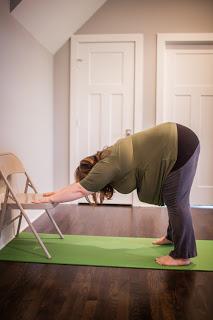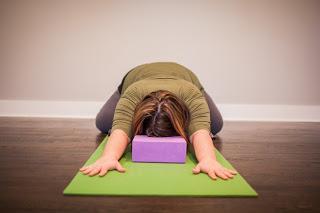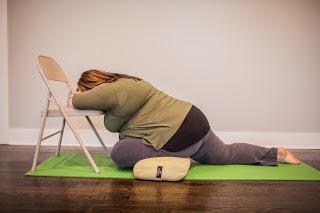
Round Dance by Niki de Saint Phalle
Do you ever wish you had a more accepting relationship with your body? If so, I’m right there with you.I had an almost entirely negative relationship with my body for much of my life. So when I finally realized that continuing to force my body to try and become something it isn’t was futile, I turned to body acceptance.
But I had no idea how to get started.
Even though I read books and went to therapy, it still never felt like anything was shifting much. That is, until I noticed that the tools I’d been learning on my yoga mat over the years, particularly trying to listen to my body and find an answer when teachers would ask me things like “What does your baby toe feel like in this pose?,” might just be a big help.
There are many myths about body acceptance, but one of the most pervasive is that it means giving up on your body or having a static relationship with it. Of course, as anyone who has practiced yoga for more than one day knows, bodies are anything but static. After all, a Tree pose that feels solid one day may feel anything but the next, and vice versa.
The truth about bodies is that they are always changing. So even if you wanted to have a static relationship with your body, that wouldn’t even be possible because it’s not a thing.
What I’ve found over the years, both in my own practice and with students, is that yoga can help with body acceptance precisely by inviting us into this moment of observation and conversation with our ever-changing bodies.
And while a skillful teacher can offer questions to bring you into this conversation, you can also do it on your own. Here are some of my favorites, along with poses you might apply them to (though you can use them with any pose!).
1. What does my body need in this moment, and how can I meet that need with the resources I have on hand?I ask myself this one most days, both on and off the yoga mat. I think of it as the question underneath all the other questions. The second half is important because we can so often ask the first part, come up with an answer like “a three month vacation,” then throw our hands up in frustration. The second half of the question invites us into the present moment by reminding us that we can find ways to know and meet our own needs, both of which are so instrumental to creating a more loving relationship with ourselves. After all, it’s hard to form a positive relationship with someone you don’t know well, particularly when that someone is your own body.
One pose to try this question with is Downward-Facing Dog pose with a chair. What I love about using a chair with this pose is how it can shift your focus to this question so beautifully because it lets you drop out of any question about how far down your heels come or how long you can hold yourself in the pose, and invites you to move into what your body is experiencing.

Oh goodness, how often do we let ourselves accept any support at all, much less what we actually need? Yoga can be a powerful place to practice this just through experimenting with the support of props.
You might try this question with Child’s pose. In the version I’m showing here, I’ve taken my knees wide to make space for my belly because it lets me feel more comfortable and supported. I’ve also added a block under my head to avoid feeling strangled and/or suffocated by my chest—which, probably not too surprisingly, isn’t a very supportive feeling. You could also experiment with placing a blanket or bolster behind your knees if your bum doesn’t rest comfortably on your heels.

What I like about this question is how often the answer can surprise you. Our society tends to encourage an either/or relationship with bodies and movement—either you’re pushing yourself as hard as you can at every moment or you’ve thrown in the towel. In that context, kindness is usually construed as doing less, being gentler, etc. And, of course, sometimes that’s precisely what’s needed! But our bodies are not as either/or as our minds like to make them, so sometimes kindness looks like trying something different or holding a pose a moment longer. I believe this question opens up possibility, which is just what we need when having a conversation with our bodies.
An interesting pose to use this question with is Pigeon pose. My answer to this question with this pose is often the version I’m showing here, with a bolster supporting my front leg and bringing my head to a chair seat. Here I’m able to be in the pose with more comfort and to settle in for more time because of it.


Anna Guest-Jelley is the founder of Curvy Yoga, an online yoga studio and teacher training center that helps people of all sizes find true acceptance and freedom, both on and off the mat. Anna is the author of newly released Curvy Yoga: Love Yourself & Your Body a Little More Each Day. Blending personal stories with practical application of yoga (including curvy pose modifications!), this book is designed to support yoga as a tool for body acceptance, She is also the co-editor of Yoga and Body Image: 25 Personal Stories About Beauty, Bravery & Loving Your Body. To learn more about Curvy Yoga, visit www.CurvyYoga.com.
Subscribe to Yoga for Healthy Aging by Email ° Follow Yoga for Healthy Aging on Facebook ° Join this site with Google Friend Connect

